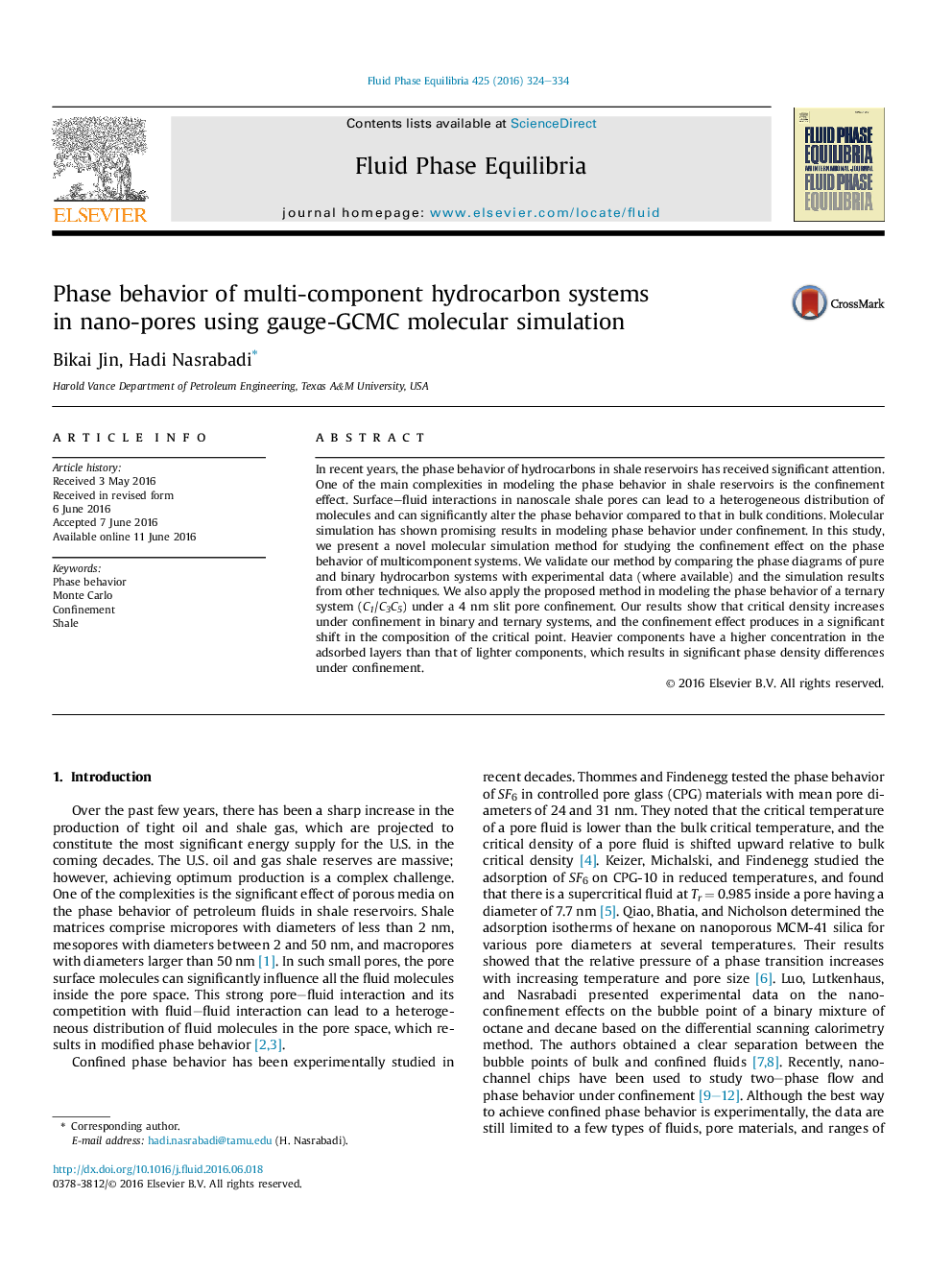| کد مقاله | کد نشریه | سال انتشار | مقاله انگلیسی | نسخه تمام متن |
|---|---|---|---|---|
| 201117 | 460533 | 2016 | 11 صفحه PDF | دانلود رایگان |
In recent years, the phase behavior of hydrocarbons in shale reservoirs has received significant attention. One of the main complexities in modeling the phase behavior in shale reservoirs is the confinement effect. Surface–fluid interactions in nanoscale shale pores can lead to a heterogeneous distribution of molecules and can significantly alter the phase behavior compared to that in bulk conditions. Molecular simulation has shown promising results in modeling phase behavior under confinement. In this study, we present a novel molecular simulation method for studying the confinement effect on the phase behavior of multicomponent systems. We validate our method by comparing the phase diagrams of pure and binary hydrocarbon systems with experimental data (where available) and the simulation results from other techniques. We also apply the proposed method in modeling the phase behavior of a ternary system (C1/C3C5) under a 4 nm slit pore confinement. Our results show that critical density increases under confinement in binary and ternary systems, and the confinement effect produces in a significant shift in the composition of the critical point. Heavier components have a higher concentration in the adsorbed layers than that of lighter components, which results in significant phase density differences under confinement.
Journal: Fluid Phase Equilibria - Volume 425, 15 October 2016, Pages 324–334
